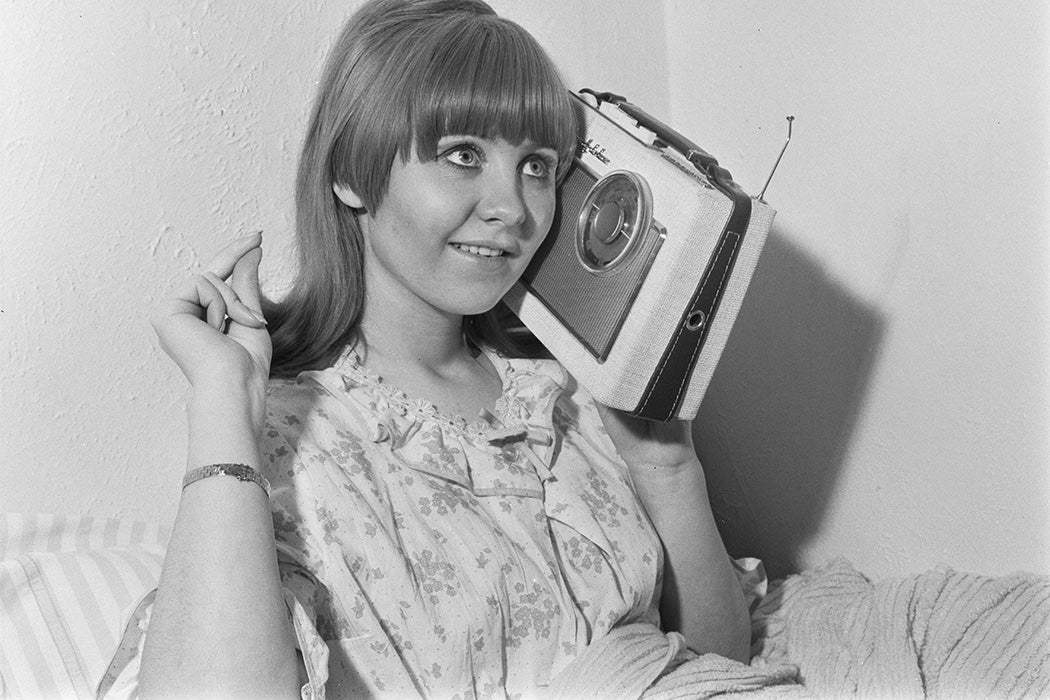An enterprising radio producer named Ed Peters had an idea. What if there was a radio format that was just for women? The unimaginatively named “Music Only for a Woman” format would be, according to an article in the June 12, 1971, issue of Record World, “highly emotional music featuring today’s leading male vocalists.” The format, sold to stations as a pre-taped package, would run for eighteen hours, broken up into three-hour sections with names such as “Precious Moments” (9 a.m.–noon), “Alone By the Sea” (3 p.m.–6 p.m.), and “Soft Whispers” (6 p.m.–9 p.m.). The music would also be woven in with work by Jacques Wilson, a poet who’d worked on Moog-heavy psych-rock albums, The Zodiac: Cosmic Sounds, and The Wozard of Iz: An Electronic Odyssey.
According to Peters, it was music for the feminine psyche, “The appeal is a man’s message to a woman,” Peters told Billboard magazine. No country or hard rock on lady radio. Instead, it would play something akin to the day’s hits but with different arrangements. While The Beatles had some good songs, “the arrangements weren’t right for the format,” Peters said. However, “Music Only for a Woman” would provide that with a softer, gentler style. This format wasn’t particularly concerned with art. Women were a market like any other, and as researcher John Wallace White explains, “The choice of format is usually determined not by musical concerns, but by business concerns.”
Peters wasn’t the first radio executive to try to capture the so-called feminine market. Mood music, which was first packaged for consumers by the Muzak company in 1934, featured “expertly curated musical playlists hand selected for background functions,” explains American Studies scholar Paul Allen Anderson. These playlists were then sold to subscribers—first home listeners, but later, mostly businesses. Like Peters and his Beatles rearrangements, Muzak also relieved pop music of “attention-grabbing vocals, hard edges, grating dissonance, or rhythmic shocks, [creating] a “feminine” sonic atmosphere.” This would later be followed by the Good Music radio format in the 1950s, “a full-time radio format aimed especially at women working in the home and uninterested in the current hits on youth-oriented radio stations.”
Though “Music Only for a Woman” wasn’t an enduring format, it did give rise to one that we’re still hearing today— easy listening, though this genre has been around (with different names) for a long time. According to Media Studies scholar, Keir Keightley, easy listening as a title dates back to the early 1940s, though the “easy” may be in reference to the effort it took to listen rather than a particular style. This was music for relaxing, for putting your mind at ease, and it could be anything from light classical to show tunes. As Keightley points out, “Men and women equally enjoyed easy listening.” So, if that’s the case, how did it become the go-to for “Music Only for a Woman?” It’s a matter of perspective, Keightley explains.
Weekly Newsletter
This is music that can be described as “soothing, gentle, quiet, muted, lush […] all words easily associated with ‘femininity’” Keightley writes. Adding to this is the emergence of rock as not just a genre but an identity and ethos, one, which like other styles before it, “worked to position [itself] as masculine and superior.” Anything outside of that becomes feminine by default and perfect, from a marketing standpoint, to sell to women.
Over the years, easy listening would take other names and target other listeners—Adult Contemporary, Quiet Storm, Soft Rock—each trying to find just the right mix of mood and music; gender would often find its way into the equation. However, as Keightley explains, “music itself does not have a gender; it is [humans] who work to gender music, typically in order to assert power over and through musical culture.”
Support JSTOR Daily! Join our new membership program on Patreon today.







